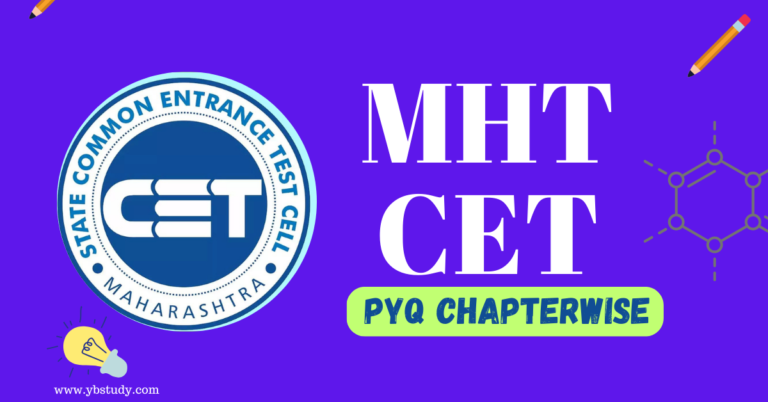Biology MHT-CET Mock Test Practice Set 03
MHT-CET Biology Mock Test Paper Number 03 :
THE MHT CET Biology Mock test is one such method that proves to be very useful for the students preparing for the MHT-CET exam. Through Biology Mock Test, you will come to know how correct your exam preparation is, this will also make it easier for you to understand the pattern of the exam. If you are going to appear first-time online exam then you should definitely give this MHT CET mock test biology at once. They will get a lot of help in your main exam for this you can read MHT-CET Biology MCQ Pdf.
MHT CET Biology Mock Test Online:
1. Blood is_________
a) Epithelial tissue
b) Hard connective tissue
c) Fluid connective tissue
d) Nervous tissue
2. The metabolic waste present in blood plasma is_______
a) Creatinine
b) Thrombin
c) Fibrinogen
d) Prothrombin
3. The biconcave blood corpuscles in human blood are________
a) Red blood corpuscles
b) White blood corpuscles
c) Blood plate lets
d) Both a & b
4. Excretion refers to the removal of_________
a) CO, by Lungs
b) Excess water from the body
c) The waste and unwanted products formed during metabolism
d) Harmful products
5. From the following______organ is not involved in excretion.
a) Skin
b) Lung
c) Stomach
d) Liver
6. Ureotelic excretion is found in________
a) Amphibians
b) Aves
c) Mammałs
d) Reptiles
7. Main function served by perspiration is_____________
a) Osmoregulation
b) Temperature regulation
c) Excretion of urea
d) Homeostasis
8. Which of the following statements is not true for retroviruses?
(a) Retroviruses are causative agents for certain kinds of cancer in man
(b) DNA IS not present at any stage in the life cycle of retroviruses
(c) Retroviruses carry genes for RNA-dependent DNA polymerase
(d) The genetic material in mature retroviruses RNA
9. Which one of the following pairs is not correctly matched?
(a) Rhizobium – Biofertilizer
(b) Streptomyces Antibiotic
(c) Serratia – Drug addiction
(d) Spirulina – Single cell protein
10. A free-living nitrogen-fixing cyanobacterium that can also form a symbiotic association with the water fern. Azolla is________
(a) Anabaena
(b) Tolypothrix
(c) Chlorella mo
(d) Nostoc
11. Thermococcus, Methanococcus, and
Methanobacterium exemplify______
(a) Bacteria that contain a cytoskeleton and ribosomes
(b) Archaebacteria that contain protein homologous to eukaryotic core histones
(c) Archaebacteria that lack any histones resembling those found in eukaryotes but whose DNA is negatively supercoiled
(d) Bacteria whose DNA is relaxed or positively supercoiled but which have a cytoskeleton as well as mitochondria
12. In light of the recent classification of living organisms into three domains of life (bacteria, archaea, and eukarya), which one of the following statements is true about archaea?
(a) Archaea completely differ from prokaryotes
(b) Archaea resemble eukarya in all respects
(c)Archaea have some novel features that are absent in other prokaryotes and eukaryotes
(d) Archaea completely differ from both prokaryotes and eukaryotes
13. Which type of plant should be selected for forestry________
a) Slow-growing plants
b) Fast-growing plants
c) Economically important plants
d) Both b and c
14. Find out the odd one________
(a) Dodo
(b) Peacock
(c) Tiger
(d) Deer
15. The endemic species which are survivors of the geological past are known as__________
a) Poly endemics
b) Neo-endemics
c) Pseudo endemics
d) Paleo endemics
16. VNTRS represents_______
a) Functional genes in the DNA
b) Exons
c) Specific noncoding sequences with unique tandem repeats.
d) Telomers
17. F.C. steward first obtained entire carrot plant by culturing________
a) Phloem tissue of carrot root
b) Leaf tissue of carrot
c) Apical bud of carrot
d) Shoot of carrot
18. The structure associated with genetic Engineering are________
a) Plastids
b) Plasmids
c) Protoplasm
d) Mitochondria
19. Suspension culture is obtain in_________
a) Agar medium
c) Any medium
b) Solid medium
d) Liquid medium
20. The liquid medium requires constant agitation. it helps in________
a) Aeration
b) Constant mixing of medium
c) To avoid cell aggregates
d) All of these
Answers:
| 1. C | 2. A | 3. A | 4. C | 5. C |
| 6. C | 7. B | 8. B | 9. C | 10. A |
| 11. B | 12. C | 13. D | 14. A | 15. D |
| 16. C | 17. A | 18. B | 19. D | 20. D |

